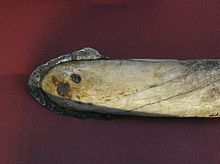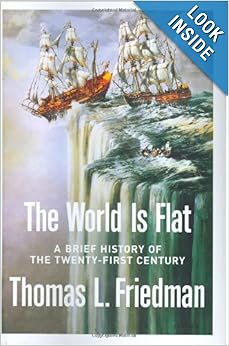I never heard of narwhals until I studied the middle ages. They fascinated me, because I think I saw drawings of them as a kid and thought they were fantasy creatures. They are quite real, however, and also very large. Why did I come across them in class? Because they were hunted by the Vikings.
Since a Narwhal can be 28 feet long and weigh over 3,000 pounds, it's no easy task to kill one, but the real trick is the timing. Like other whales, the narwhal is most vulnerable when it comes to the surface for air, but if it is killed immediately it will sink to the bottom of the ocean. The Vikings learned to stab them with harpoons only after seeing them take in a large breath, enabling the air-filled carcass to float so it could be towed back to land.
 The most interesting part of the narwhal is obviously the tusk, which can be up to ten feet long. The coolest picture I've ever found on Wikipedia is on the right, and the caption says it's "[t]he head of a lance made from a Narwhal tusk with a meteorite iron blade." Seriously? Someone found a meteorite, pounded it around a narwhal tusk, and used it as a lance? Is there an epic poem to go along with that? Did he call himself "The Narwhal" and battle injustice with a crudely drawn picture of a whale drawn on his shield? I wish I knew, because that sounds like the most awesome story I've never heard.
The most interesting part of the narwhal is obviously the tusk, which can be up to ten feet long. The coolest picture I've ever found on Wikipedia is on the right, and the caption says it's "[t]he head of a lance made from a Narwhal tusk with a meteorite iron blade." Seriously? Someone found a meteorite, pounded it around a narwhal tusk, and used it as a lance? Is there an epic poem to go along with that? Did he call himself "The Narwhal" and battle injustice with a crudely drawn picture of a whale drawn on his shield? I wish I knew, because that sounds like the most awesome story I've never heard.There is another thing about these tusks that I think is neat: Vikings convinced other Europeans that they were unicorn horns and sold them with the promise of having magic powers. When medieval people believed in unicorns, it was partly because some of them had seen these tusks hanging on someone's wall with a name plate that read, Unicorn Horn - (according to some Vikings).




